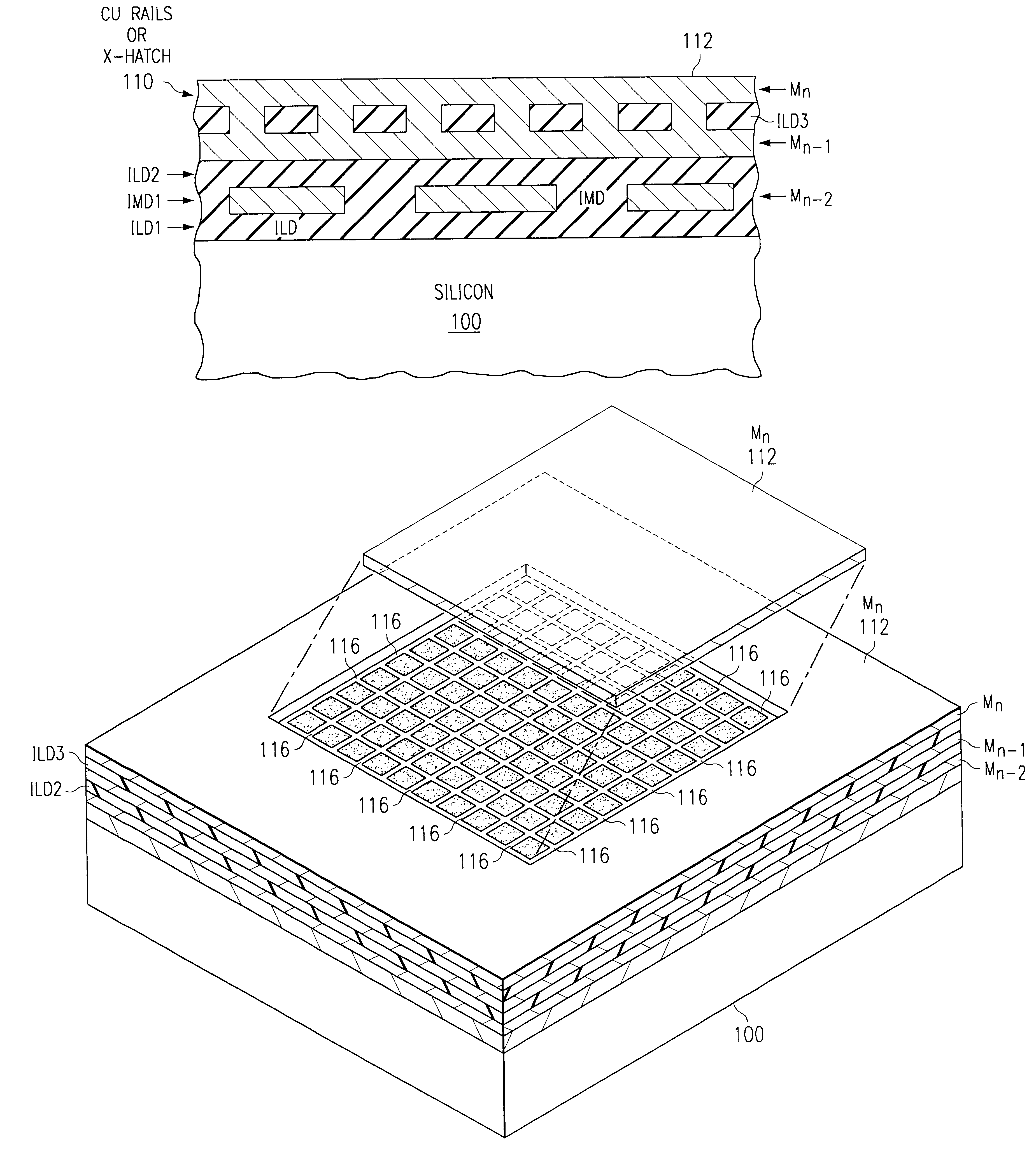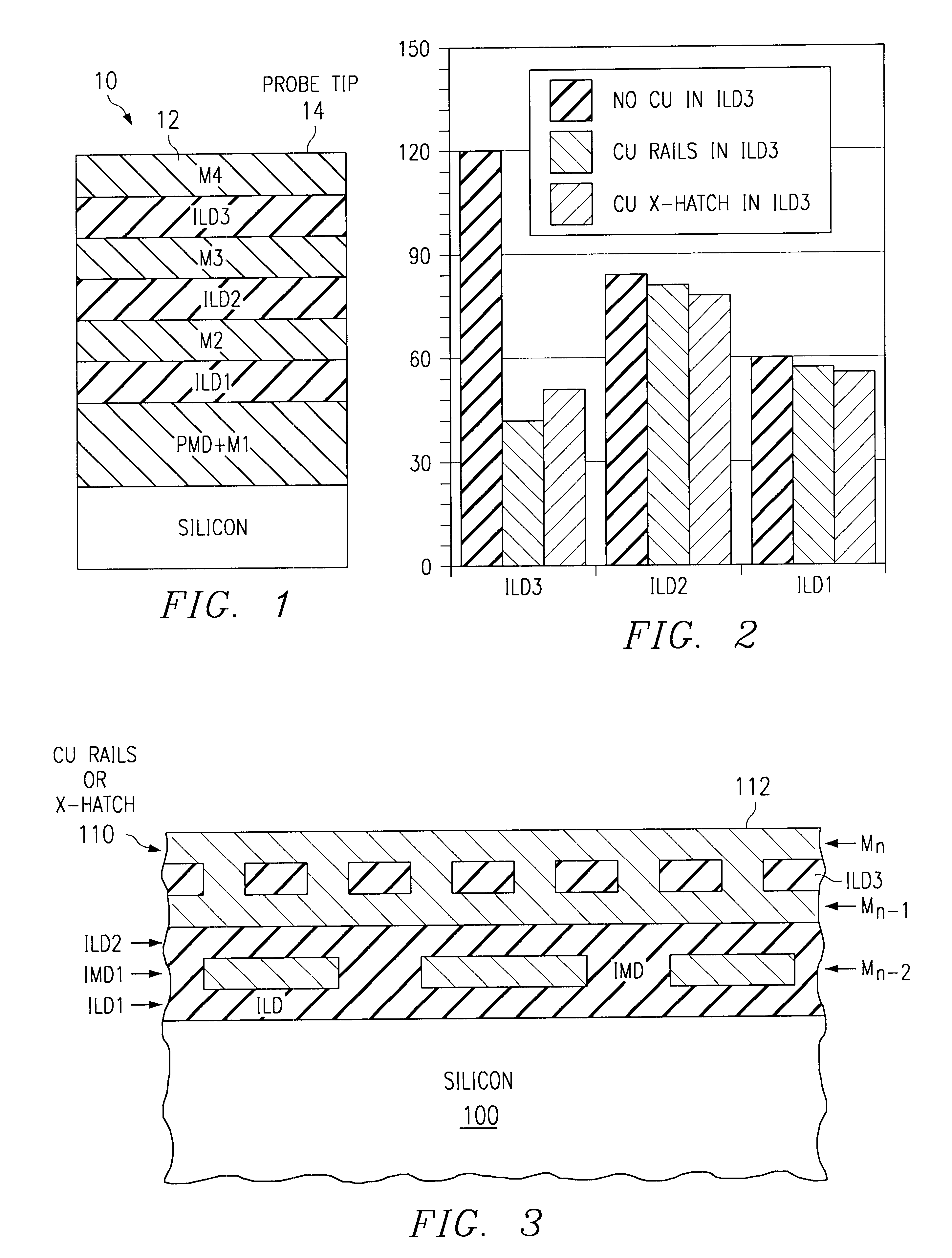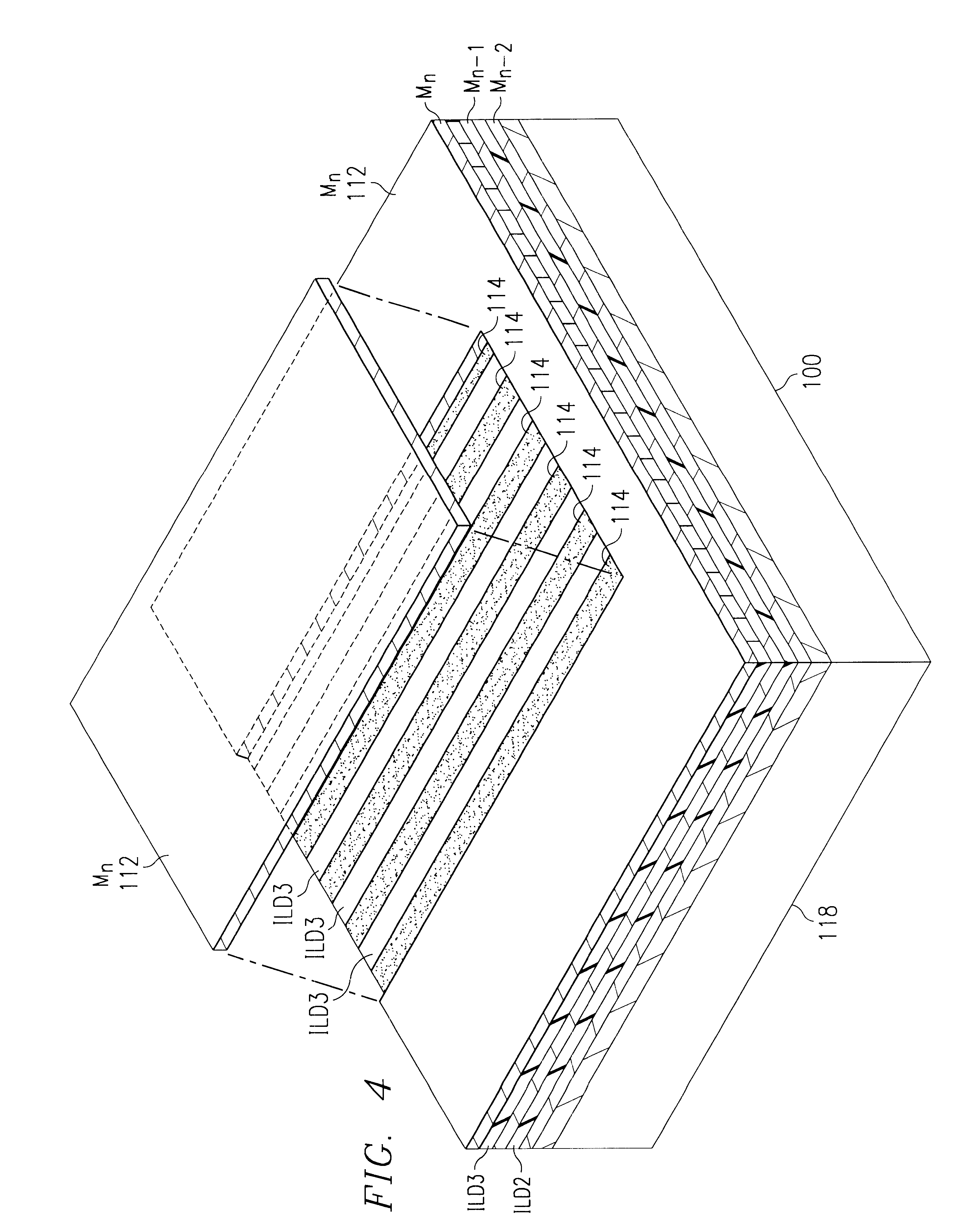Approach to structurally reinforcing the mechanical performance of silicon level interconnect layers
a technology of interconnect layers and mechanical properties, applied in the direction of semiconductor/solid-state device details, chemistry apparatus and processes, transportation and packaging, etc., can solve the problems of deformation of the underlying metal structure, delamination of the layers in the metal structure, and fracture of the underlying dielectri
- Summary
- Abstract
- Description
- Claims
- Application Information
AI Technical Summary
Problems solved by technology
Method used
Image
Examples
Embodiment Construction
With the advancement of silicon technology in to newer process nodes, conventional probing and bonding techniques begin to create extensive mechanical damage in the form of micro-cracks under the bond pad areas. Micro-cracking can be more than a cosmetic problem. It can cause yield loss due to an electrical fail and / or affect device reliability. Micro-cracking in newer technologies is believed to be due to the use of a thinner top metal interconnect layer. In many cases, the thickness of the top metal interconnect is being reduced from around 6000 .ANG. to 4500-5000 .ANG.. These micro-cracks may result in significant yield loss after probe and / or wire bonding or flip-chip interconnect operations. The resulting level of yield loss and / or non-reliable products is expected to be 10-20%.
The problem is likely to be further compounded as low dielectric constant (low-k) materials are employed. The low-k materials are typically less mechanically durable. However, the low-k materials are nee...
PUM
| Property | Measurement | Unit |
|---|---|---|
| Dielectric polarization enthalpy | aaaaa | aaaaa |
| Electrical conductor | aaaaa | aaaaa |
| Stress concentration factor | aaaaa | aaaaa |
Abstract
Description
Claims
Application Information
 Login to View More
Login to View More - R&D
- Intellectual Property
- Life Sciences
- Materials
- Tech Scout
- Unparalleled Data Quality
- Higher Quality Content
- 60% Fewer Hallucinations
Browse by: Latest US Patents, China's latest patents, Technical Efficacy Thesaurus, Application Domain, Technology Topic, Popular Technical Reports.
© 2025 PatSnap. All rights reserved.Legal|Privacy policy|Modern Slavery Act Transparency Statement|Sitemap|About US| Contact US: help@patsnap.com



